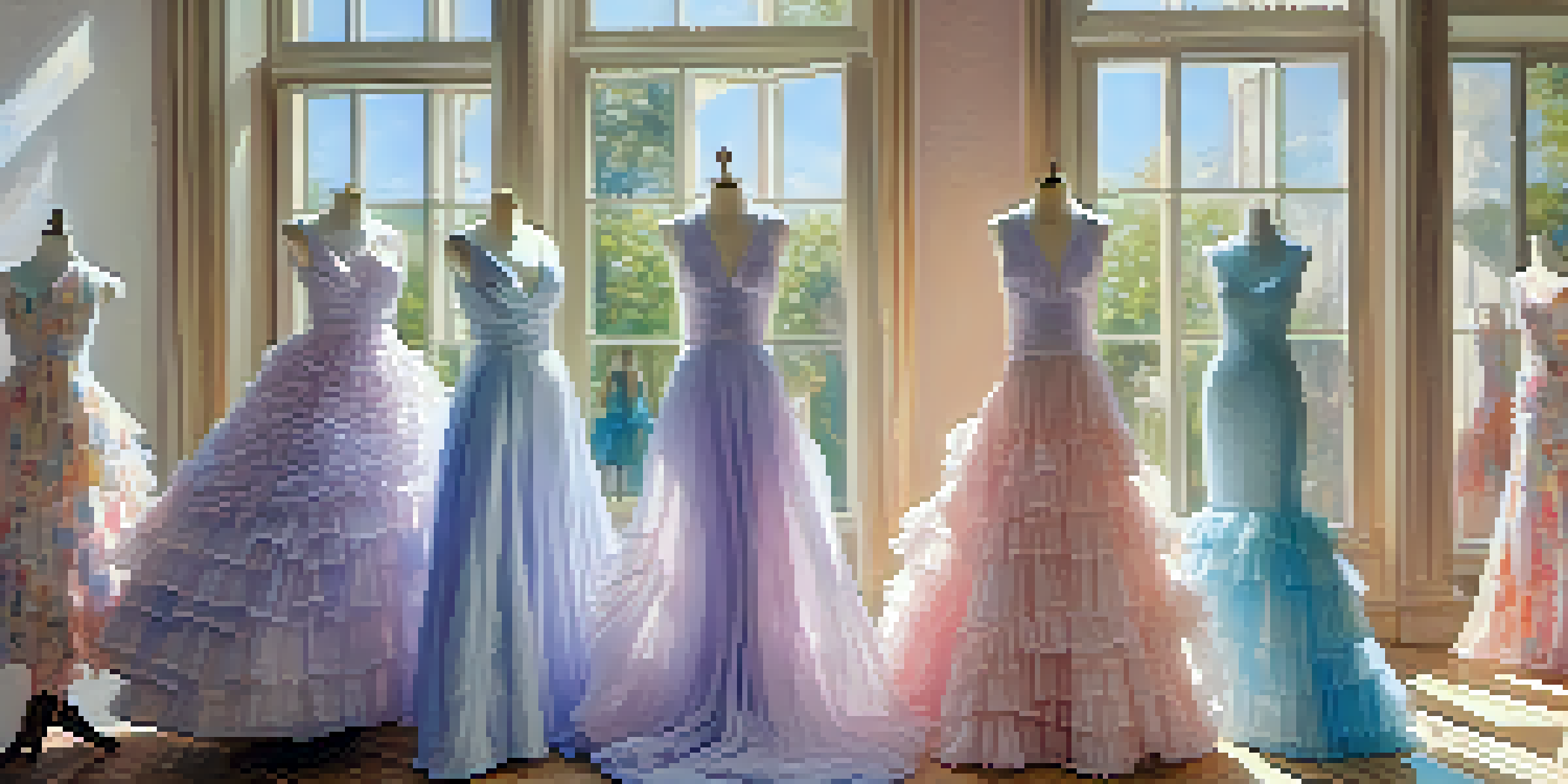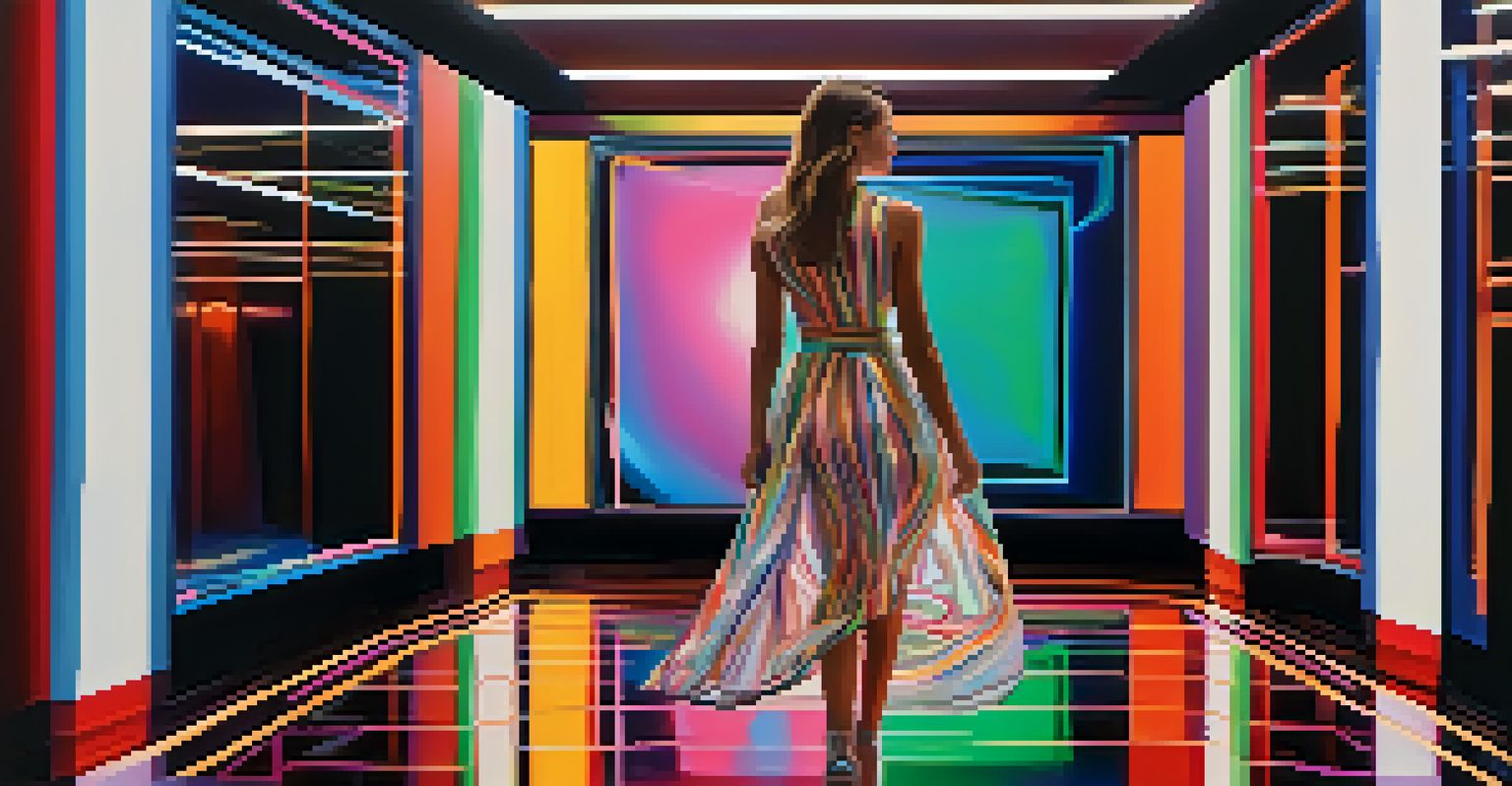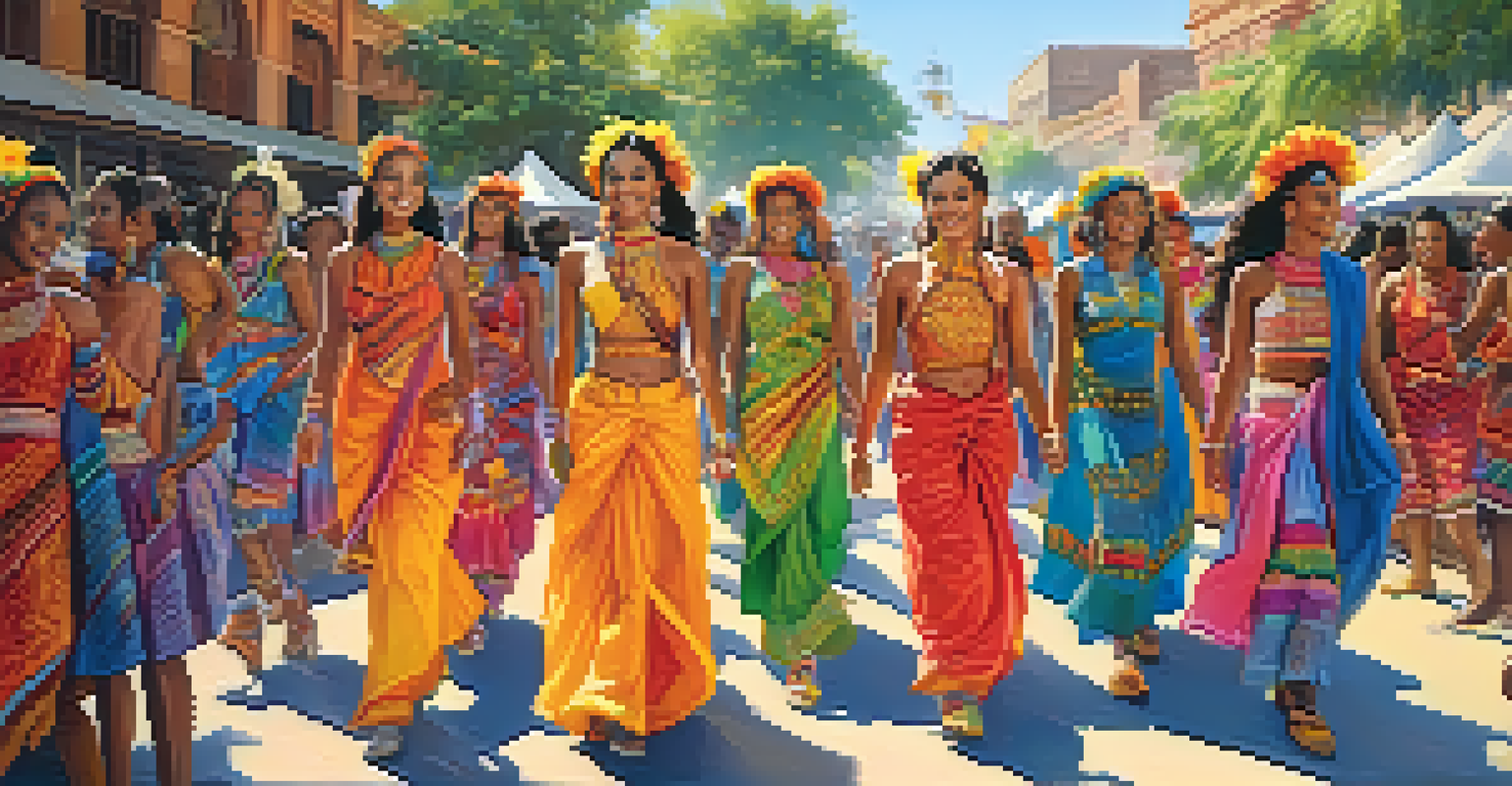The Color Palette: How Art Influences Fashion's Seasonal Trends

Understanding the Connection Between Art and Fashion
Art and fashion have danced together for centuries, influencing each other in profound ways. Think of a painter's palette; the colors chosen can inspire a designer's collection. This relationship is not just a coincidence but a reflection of cultural moods and societal changes.
Fashion is the armor to survive the reality of everyday life.
As artists explore new techniques or themes, fashion designers often take these cues, translating them into wearable art. For example, the vibrant hues of Impressionist paintings often find their way into spring collections, evoking feelings of renewal and freshness. It's a beautiful cycle where creativity begets creativity.
Ultimately, this interplay allows fashion to remain dynamic and relevant, responding to the emotional and aesthetic influences of the world around us. By understanding this connection, we can appreciate how a simple color can evoke a myriad of feelings and trends.
The Role of Color Theory in Art and Fashion
Color theory is the backbone of both art and fashion, providing a framework for understanding how colors interact. Artists use this theory to create compositions that evoke specific emotions, while fashion designers apply it to develop collections that resonate with consumers. For instance, warm colors like reds and oranges can create a sense of excitement, making them popular for fall collections.

In contrast, cooler colors like blues and greens often promote calmness and relaxation, which is why they frequently appear in summer wear. By leveraging color theory, designers can dictate the mood of a season, aligning their collections with what people are feeling or aspiring to feel.
Art and Fashion: A Dynamic Duo
The interplay between art and fashion inspires creativity, reflecting cultural moods and societal changes.
Moreover, the psychological impact of color cannot be underestimated; it can influence purchasing decisions and brand perception. This understanding has made color a powerful tool in both the art world and fashion industry.
Seasonal Color Trends: A Reflection of Artistic Movements
Each season brings a new wave of color trends, often inspired by current artistic movements or exhibitions. For example, when abstract art gained popularity, fashion designers embraced bold, non-traditional color combinations. These trends reflect not just aesthetic preferences but also the cultural zeitgeist, capturing the spirit of the times.
Color is the keyboard, the eyes are the harmonies, the soul is the piano with many strings.
In recent years, we've seen a rise in eco-conscious art and design, leading to earthy, sustainable color palettes in fashion. Shades like terracotta and moss green have become staples, resonating with consumers' growing awareness of environmental issues. This shift illustrates how art can inspire change in fashion, aligning it with broader societal values.
By examining these seasonal trends through the lens of art, we can gain insight into not just what colors are popular but why they are significant. Each color tells a story, and understanding that story enriches our experience of fashion.
Iconic Art-Inspired Fashion Collections
Throughout history, several fashion collections have drawn direct inspiration from iconic artworks. For instance, the famous 'Van Gogh' collection by a leading designer featured swirling patterns reminiscent of the artist's brushstrokes. Such collections not only celebrate the artwork but also breathe new life into it, making it accessible to a broader audience.
Another example is the vibrant designs inspired by Frida Kahlo, where floral patterns and bold colors reflect her unique artistic style. This fusion of art and fashion creates a dialogue between the two mediums, showcasing how they can complement and elevate each other.
Color Theory Shapes Collections
Understanding color theory allows designers to evoke emotions and influence trends through their seasonal collections.
These collections exemplify how art can transform fashion into a canvas of expression, allowing wearers to showcase their appreciation for both. It's a wonderful way to wear a piece of art, fostering a deeper connection between the observer and the artwork.
The Influence of Digital Art on Fashion Trends
In today's digital age, the rise of digital art has significantly impacted fashion trends. Designers are now able to experiment with colors and patterns in ways that were previously unimaginable. Virtual reality and graphic design tools allow for bold experimentation, often leading to innovative collections that reflect modern artistic expressions.
For example, the use of digital prints has introduced a new realm of possibilities, enabling designers to incorporate intricate designs that mimic famous artworks. This trend has made art more accessible, as pieces can be digitally reproduced and incorporated into fast fashion.
As technology continues to evolve, so will the relationship between digital art and fashion. This synergy not only influences seasonal trends but also challenges traditional notions of art and fashion, paving the way for a more inclusive and diverse landscape.
Cultural Influences Shaping Seasonal Color Choices
Cultural events and movements play a significant role in determining seasonal color palettes. For instance, during Pride Month, bright rainbow hues dominate fashion collections, celebrating diversity and inclusion. Similarly, colors associated with various cultural festivals can dictate trends, reflecting the vibrancy of those celebrations.
The global exchange of ideas and aesthetics also contributes to more eclectic color choices. Designers often draw inspiration from traditional textiles and art forms from different cultures, leading to unique color combinations that honor these influences. This cultural interconnectedness enriches the fashion landscape and fosters a spirit of collaboration.
Cultural Influences on Color Trends
Cultural events and movements significantly shape seasonal color palettes, allowing fashion to tell diverse stories.
By embracing cultural influences, fashion becomes a platform for storytelling, allowing individuals to express their identities through color. This connection between culture and color highlights the importance of representation in the fashion industry.
The Future of Art and Fashion Color Trends
Looking ahead, the relationship between art and fashion is poised for exciting developments. As sustainability becomes increasingly important, we may see more designers drawing inspiration from nature's color palette. Earth tones and biodegradable materials could dominate future collections, reflecting a shift towards eco-consciousness.
Moreover, as technology continues to advance, we might witness even more innovative ways for artists and designers to collaborate. The fusion of augmented reality and fashion could lead to interactive experiences, allowing consumers to engage with color trends in real time.

Ultimately, the future of color trends in fashion will likely be a blend of artistic innovation and cultural sensitivity. This evolution will continue to reflect the world around us, making the connection between art and fashion more relevant than ever.